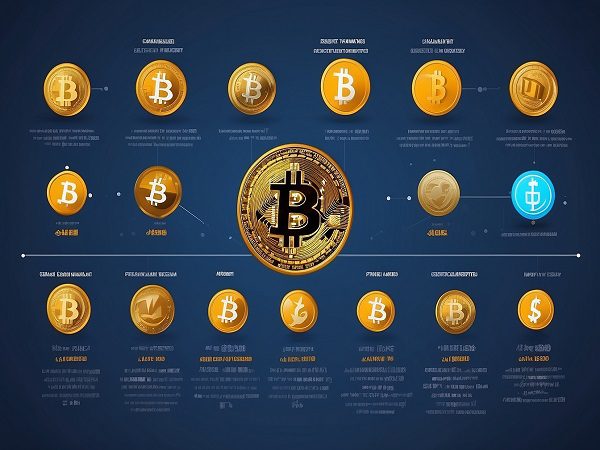Introduction
In recent years, the landscape of finance has undergone a revolutionary transformation with the rise of cryptocurrencies. These digital assets have not only disrupted traditional financial systems but have also paved the way for innovative technologies and solutions.
The Birth of Bitcoin
At the heart of the cryptocurrency revolution lies the inception of Bitcoin. Introduced in 2009 by an anonymous entity known as Satoshi Nakamoto, Bitcoin marked the beginning of a decentralized monetary system. Built on blockchain technology, Bitcoin offers a peer-to-peer electronic cash system, allowing users to conduct transactions without the need for intermediaries. Its scarcity, with a maximum supply capped at 21 million coins, ignited interest and sparked the creation of a new asset class.
Blockchain Technology:
A Game-Changer
Central to the success of Bitcoin and subsequent cryptocurrencies is blockchain technology. A blockchain is a decentralized and immutable ledger that records all transactions across a network of computers. Each block contains a cryptographic hash of the previous block, creating a secure and transparent system. Beyond finance, blockchain technology has found applications in various industries, including supply chain management, healthcare, and voting systems, revolutionizing data management and fostering trust in digital interactions.
Smart Contracts and Ethereum
While Bitcoin laid the foundation for digital currencies, Ethereum expanded the possibilities with the introduction of smart contracts. Launched in 2015 by Vitalik Buterin, Ethereum is a decentralized platform that enables the execution of self-executing contracts without the need for intermediaries. Smart contracts are programmable agreements that automatically enforce terms and conditions when predefined conditions are met. This innovation opened the door to decentralized applications (DApps) and the development of decentralized finance (DeFi) protocols, revolutionizing the way financial services are delivered and accessed.
Rise of Altcoins and Tokenization
As the cryptocurrency market matured, a plethora of alternative digital assets, known as altcoins, emerged. These coins offered unique features and use cases, catering to diverse needs and preferences. From privacy-focused currencies like Monero to scalable platforms like Cardano, altcoins expanded the possibilities of digital wealth and facilitated experimentation with new technologies. Moreover, the concept of tokenization enabled the representation of real-world assets, such as real estate and artwork, on blockchain networks, unlocking liquidity and democratizing access to investment opportunities.
Decentralized Finance (DeFi) Ecosystem
One of the most significant innovations in recent years is the rise of decentralized finance (DeFi). DeFi refers to a set of financial services and applications built on blockchain networks, offering alternatives to traditional banking systems. From decentralized exchanges (DEXs) to lending platforms and yield farming protocols, DeFi enables users to access financial services without intermediaries, providing greater transparency, security, and efficiency. Despite regulatory challenges and security concerns, the DeFi ecosystem continues to grow, attracting investments and reshaping the future of finance.
NFTs:
Digital Ownership and Creativity
Non-fungible tokens (NFTs) have taken the digital world by storm, revolutionizing the concept of ownership and creativity. Unlike cryptocurrencies, which are interchangeable and identical, NFTs are unique digital assets that represent ownership of digital or physical items. From digital art and collectibles to virtual real estate and in-game assets, NFTs have unlocked new revenue streams for creators and enabled novel forms of expression. While the NFT market has experienced explosive growth, questions remain about sustainability and market dynamics.
Challenges and Opportunities Ahead
While the evolution of digital wealth has been marked by innovation and growth, challenges persist on the horizon. Regulatory uncertainty, scalability issues, and security concerns pose significant hurdles to mainstream adoption and sustainability. Moreover, the volatility of cryptocurrency markets remains a point of contention for investors and policymakers alike. However, with each challenge comes an opportunity for improvement and advancement. As the ecosystem continues to mature, collaboration, education, and responsible innovation will be key to realizing the full potential of digital wealth.
Conclusion
The evolution of digital wealth has been a journey marked by innovation, disruption, and transformation. Additionally, From the humble beginnings of Bitcoin to the rise of decentralized finance and non-fungible tokens, cryptocurrencies have redefined the way we perceive and interact with money and assets. As we look ahead, the future of digital wealth holds promise and potential, driven by continued innovation and adoption. By embracing the opportunities and addressing the challenges, we can shape a more inclusive, transparent, and equitable financial ecosystem for generations to come.































